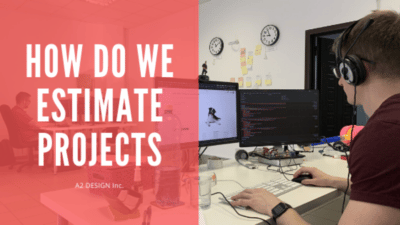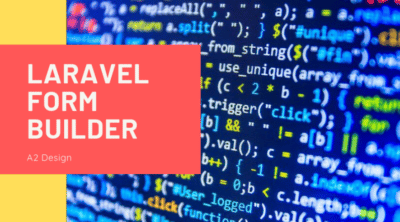React Native App Development Cost in 2024: A Comprehensive Guide for Businesses

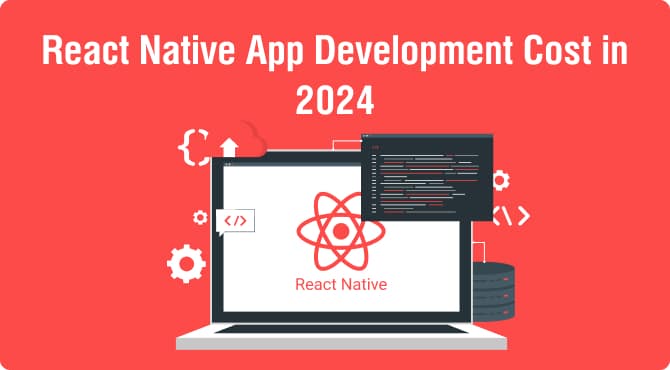
For modern businesses, mobile applications are no longer an optional luxury but a necessity. Amidst the sea of framework choices available for mobile app development, React Native stands out as a cost-effective, versatile, and efficient option. Developed by Facebook, there are several key factors contributing to React Native’s meteoric rise in popularity, including:
- Cross-Platform Compatibility: React Native allows developers to build high-performance Android and iOS apps using a single codebase. This seamless cross-platform compatibility significantly reduces development costs and time while ensuring cross-platform compatibility for your app.
- Enhanced Performance: React Native utilizes native components, enabling a level of performance comparable to traditional native applications. Optimized code execution and program rendering contribute to impressive speed and responsiveness, providing a seamless user experience.
- Superior Developer Experience: React Native features an intuitive syntax and hot reloading, simplifying the development process. Real-time preview of changes allows for rapid prototyping and efficient debugging, accelerating iteration cycles and enhancing developer productivity.
Yet, despite the popularity and attractiveness of React Native, budgeting for app development with the framework can be a puzzle. We’ll need to take factors like desired app features, location of developers, design choices, project scope variabilities, and development timelines, among others, which will influence the final price tag.
This is where this article comes in. With A2 Design’s years of hands-on experience building successful React Native applications, we’ll unravel the cost consideration and demystify the complexities of how to develop your app using React Native within your budget.
Without further ado, let’s embark on this journey together.
As we’ve briefly discussed, determining the price tag of your React Native app development isn’t a simple one-size-fits-all answer. In this section, we will unravel several important factors at play, each subtly influencing the final investment.
Let’s start with the first one:
App Complexity
Understanding the scope and complexity of your React Native app development project is the first step toward accurate budgeting.
We can generally categorize app complexity into three different levels:

1. Simple Apps
These apps focus on core functionalities and essential, straightforward user interactions. Think of simple apps as the ‘bare-bones’ of an app.
Examples include:
- Informational Apps: Company brochures, portfolios, simple catalog apps.
- Basic Utility Apps: Calculators, note-taking apps, to-do lists.
- Forms and Data Collection: Surveys and basic data entry apps.
2. Medium-Complexity Apps
Apps with richer integrations and features that go beyond essential functionality. Examples include:
- Social Networking Apps: Apps with user profiles, news feeds, and basic messaging features.
- E-commerce Apps: Apps with product listings, shopping carts, and basic payment processing.
- Marketplace Apps: Apps connecting buyers and sellers with basic search and filtering options.
3. Complex Apps
These apps are packed with intricate user interactions, advanced features, and often real-time elements.
Some examples:
- On-Demand Services: Apps like Uber or Airbnb with location tracking, complex booking systems, and payment integrations.
- Streaming Apps: Live video or audio streaming platforms.
- Real-Time Chat or Messaging Apps: Apps like WhatsApp or Discord.
- Apps with AR/VR Features: Apps incorporating augmented or virtual reality elements.
Of course, these are just guidelines, and your unique app might have a blend of features from different categories. What’s important is to understand that your app’s number of features, level of interface intricacy, and overall complexity will influence its development costs.
Features and Functionality
The heart of any app lies in its features and functionalities.
The app’s features define what the app can do (and cannot do and will directly influence the development time, difficulty, and cost).
Although different apps should be unique with their own sets of unique features, below are the common features and functionalities and how they affect your development cost:
- Login/Registration: Secure and reliable user authentication mechanisms are often a must. Complexity varies depending on the methods used (standard email/password pairing, social media sign-in, multi-factor authentication), which may require backend development, integration with authentication services, and other nuances—all of which may influence development cost and time.
- User Profiles: If your app needs to store user data, history, or preferences, consider the depth of storage and customization requirements.
- Social Integration: Integration with social media platforms (i.e., allowing users to share content, log in via social accounts, connect with friends, etc. ) may involve API integration and complex permission handling, adding to development time.
- Geolocation: Implementing geolocation features like maps, location tracking, nearby search functionalities, etc., may require integration with custom UI components and mapping APIs, which may translate into additional development complexities (and costs.)
- Payment Gateways: Integrating payment processing (i.e., PayPal, Stripe, etc.) for in-app purchases or e-commerce transactions often requires careful implementation while considering compliance with payment industry standards. This may result in additional development time, complexities, and costs.
- Push Notifications: Implementing push notifications will provide you with a great way to re-engage users, but it can be challenging to implement and manage due to the requirement of backend setup. You may also need integration with existing push notification services, handling of user permissions, and investing in backend infrastructures.
- In-App Chat or Messaging: Integrating real-time communication features (between users or with customer support) may involve the implementation of custom UI components, setting up real-time messaging services, and other complexities that may significantly increase development costs.
- Multimedia Support: Handling and supporting multimedia content, such as image/video uploads, playback, and editing features, may require setting up file storage functionality, processing, and potentially integrating with third-party media hosting services, translating into increased development costs.
- Custom Analytics: Implementation of custom analytics for tracking user behavior, app performance, and other metrics may involve integrating analytics services, instrumenting code for event tracking, and designing custom interfaces/dashboards for data visualization.
- Advanced AI Features: With the recent surge of AI in mainstream popularity, many newer apps now incorporate advanced AI or machine learning (ML) features such as personalized recommendations or predictive analytics. Adding such creatures may require expertise in AI/ML algorithms, model training, and data processing, which will lengthen development time.
Pre-built libraries can help you add standard features and functionalities to your app, but more advanced and/or unique features may require longer development hours.
Custom designs/animations or niche functionalities take a skilled developer’s time to implement, driving development costs upward.
UI/UX Design
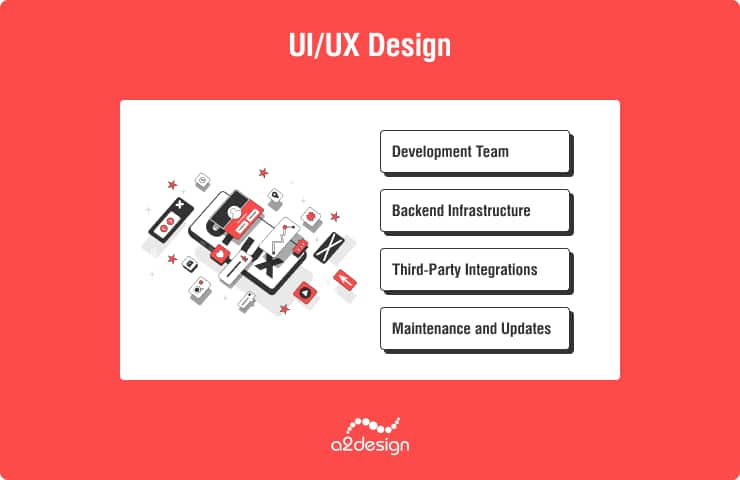
All kinds of apps could benefit from great User Interface (UI) and User Experience (UX) design. In today’s saturated app marketplace, an intuitive and visually appealing UI/UX design is essential for your app to stand out, playing a pivotal role in its adoption rate and long-term success.
Yet, the cost difference between a simple app interface and an elaborate UI/UX design can be significant:
- Simple UI: By prioritizing functionality, using standard components, and a clean layout, apps with simple UI can have a shorter development time and, thus, lower costs.
- Elaborate, Custom UI/UX Designs: Incorporating unique/difficult-to-develop visual elements, intricate animations, tailored user flows, etc., may require more prototyping, design, and implementation time, which may translate into increased costs.
Here at A2 Design, we understand the delicate balance between functionality, aesthetics, and cost-efficiency. Our UI/UX specialists work closely with developers to craft interfaces that are beautiful, functional, and easy to use without breaking the clients’ bank.
This way, we can take the strategic approach to ensure that your app not only looks visually pleasing but also provides an exceptional user experience that keeps users coming back. Whether you need a simple design or something truly unique and eye-catching, A2 Design has the expertise to tailor the perfect solution for you.
Development Team
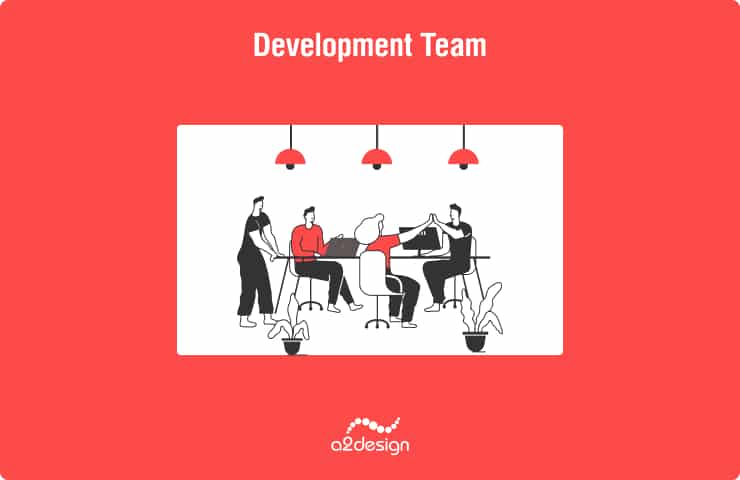
The location of the individual or team building your app, as well as the team’s structure, can have a direct impact on the development cost.
Let’s explore the available options and examine the different cost factors:
1. Hourly Rates in Different Regions
- North America: Developers here command some of the highest hourly rates. Expect to pay in the range of $100-$150+ per hour.
- Eastern Europe: This region offers a balance of skilled developers and more moderate rates, typically ranging from $50-$100 per hour.
- Asia: You’ll find some of the most affordable rates in Asia ($20-$50 per hour). However, consider potential language barriers and time zone differences that could affect communication.
2. Team Structure
- In-House: Building an internal team offers maximum flexibility and control but will typically require the highest overhead costs (recruitment, salaries, benefits). This option is ideal for large and/or ongoing projects where you need a dedicated in-house team.
- Freelancers: Working with freelance developers can be cost-effective. However, managing them, ensuring code quality, and maintaining project continuity can be challenging. This option is better for smaller projects or supplementing a team.
- Agencies: Professional agencies like A2 Design provide a structured approach, experienced teams, and a proven development process. We offer transparent pricing and prioritize clear communication, ensuring a smooth experience. This is ideal for projects where you need expertise and a reliable partner.
So, which option is the right choice for your project? Ultimately, it depends on your specific budget and project needs. Consider the size and complexity of your app, your ability to manage a project, and the value you place on experience and dependability.
Ready to Create an App?
Contact UsBackend Infrastructure
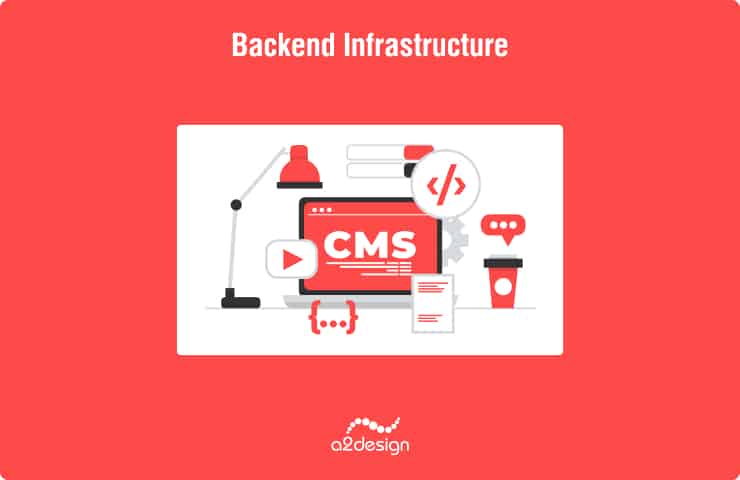
When discussing mobile apps, too often, we put too much focus on the app’s interface and user experience.
Yet, what lies beneath the surface —the backend infrastructure—- plays an essential role in the app’s functionality and is also a major factor influencing the development cost.
A robust backend is an important foundation powering your app’s functionalities, keeping it running smoothly, and ensuring your users’ data is safe and secure.
Below are the backend elements that can influence your development budget:
- Data Storage: The volume and type of data your app stores would dictate cost. Simple data might get away with basic databases, while complex apps dealing with various types of files and/or large volumes of data may need more robust and scalable storage solutions — which can be costly.
- User Management: Secure handling of user accounts, ensuring good authentication practices, and facilitating password resets and different access levels add complexity to the backend and, thus, increase development time and cost.
- Custom APIs: If your app needs to communicate with other services, platforms, or custom data sources, building custom APIs is essential. This specialized development pushes costs upward.
- Server Administration and Maintenance: Performance monitoring, ongoing updates, optimization, and implementing security measures for your backend infrastructure would require additional resources (in-house IT team or outsourced management.)
Backend as a Service: A Potential Cost-Saver
Backend as a Service (BaaS) platforms like Firebase or AWS Amplify can significantly simplify backend development with their pre-built solutions for common functionalities (i.e., push notifications, user management, and data storage services.
Especially for apps with less complex backend requirements, BAAS can help streamline the development process, reduce time-to-market, and reduce development costs.
Third-Party Integrations
Your app may need integration with third-party services, for example, to add advanced or unique features that are too expensive/challenging to develop on your own.
While integrating these third-party services has its benefits, they also come with potential development and cost implications. Below are some common third-party integrations and their cost implications:
- Analytics: Understanding user behavior is key to improving your app. Tools like Google Analytics, Firebase Analytics, or Mixpanel offer valuable insights into usage patterns. Integrating analytics usually requires some setup and configuration, adding to development time.
- Maps and Location Services: Location-based features require working with providers like Google Maps or Mapbox. These services often have usage-based pricing models, meaning your costs can fluctuate based on how frequently users interact with these features.
- Payment Gateways: Integrating with secure payment providers like Stripe, PayPal, or Braintree is vital for e-commerce apps. Handling payment processing adds complexity to both the front end and back end, increasing development time and necessitating strict security measures.
- Social Media Integrations: Allowing users to share content or connect with their social networks requires integration with platforms like Facebook, Twitter, or Instagram. Each platform has its unique APIs and requirements, increasing development complexity.
- Cloud Services: Integrating cloud services for data storage, machine learning, or other specialized features requires careful consideration of setup, configuration, and ongoing usage costs.
In general, the more third-party integrations you add, the more development time and complexity. Thus, be careful when choosing integrations and only choose those that genuinely add to your app’s core value. Factor the integration costs into your budget.
Maintenance and Updates
Just like a car needs regular maintenance and tune-ups, your apps will also require ongoing care to stay “healthy” and keep its users engaged optimally.
To get a holistic view of the true investment costs of your React Native app, it’s important to factor in maintenance and update costs.
Here’s a breakdown of typical maintenance and update costs that may arise post-launch:
- Bug Fixing: Resolving bugs and issues promptly is key to maintaining user satisfaction. The cost of bug fixing may vary depending on the frequency and severity of the issues.
- Feature Updates: To stay competitive and keep users engaged, you’ll need to roll out new features and updates over time, which may incur varying costs depending on the frequency and complexity of the updates.
- OS Compatibility: As Apple and Google release new versions of iOS and Android, you may need to update your app to ensure compatibility. This can range from minor adjustments to more significant overhauls, depending on the extent of OS changes.
- Backend Maintenance: Monitoring, updates, and security patches of your backend infrastructure. The costs can vary depending on the backend infrastructure’s complexity and whether you handle the maintenance in-house or outsource it.
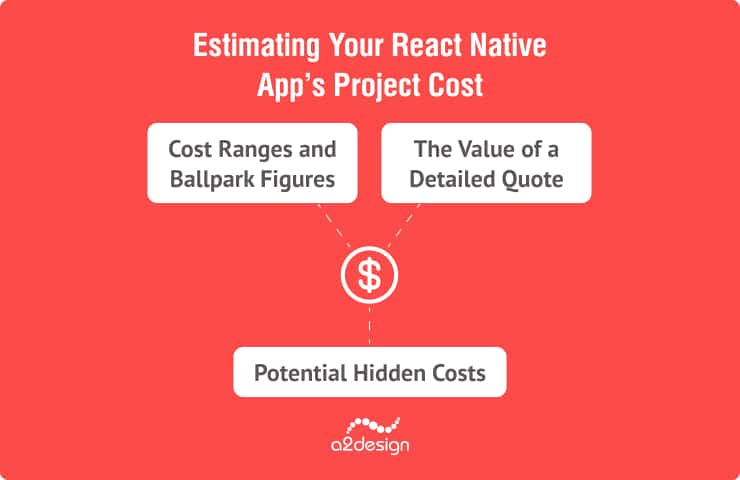
Cost Ranges and Ballpark Figures
Now that we’ve explored the different factors that may influence your project cost, we’ll get into the specifics in this section.
While it’s impossible to provide a one-size-fits-all price tag for your React Native app, below are the general cost ranges of a typical development project:
- Simple App ($15,000-$40,000 estimated cost range): A basic informational app with a few screens, user login, and minimal data storage would likely fall in the lower end of the ‘Simple’ range.
- Medium App ($40,000-$80,000 estimated cost range): An e-commerce app with product listings, a shopping cart, social integration, and payment processing would likely fit within the ‘Medium’ range.
- Complex App ($80,000-$200,000+ estimated cost range): An on-demand service app with real-time location tracking, complex booking systems, payment integrations, and in-app messaging features would fit in the ‘Complex’ range.
Again, these ranges are just a starting point, and your actual cost might be lower or higher depending on your specific requirements and the factors discussed above.
Potential Hidden Costs
Several ‘hidden’ costs can sneak up if you are too focused on the big-ticket items like development hours. Consider the often-overlooked expenses:
- Project Management: Effective project management processes like task coordination, risk management, team oversight, and client communication are critical for on-time delivery. A dedicated project manager can make all the difference and should be factored into the overall costs (Roughly 10-15% of the development cost).
- Testing: Rigorous testing is vital for a polished app release. This includes unit testing, integration testing, UI testing, and testing on various devices and OS versions (Roughly 15-20% of the development cost).
- Deployment: Submitting your app to the App Store and Google Play involves more than just clicking a button. You need developer accounts, prepare app metadata (descriptions, screenshots), and optimize for app store guidelines. It can also involve a series of updates and responses to feedback during the approval process. (Roughly $1,000 – $2,000 annually, including ongoing updates).
- App Store Fees: Apple charges a $99 annual fee for their developer program, while Google Play requires a one-time $25 registration fee. These costs are recurring.
The Value of a Detailed Quote
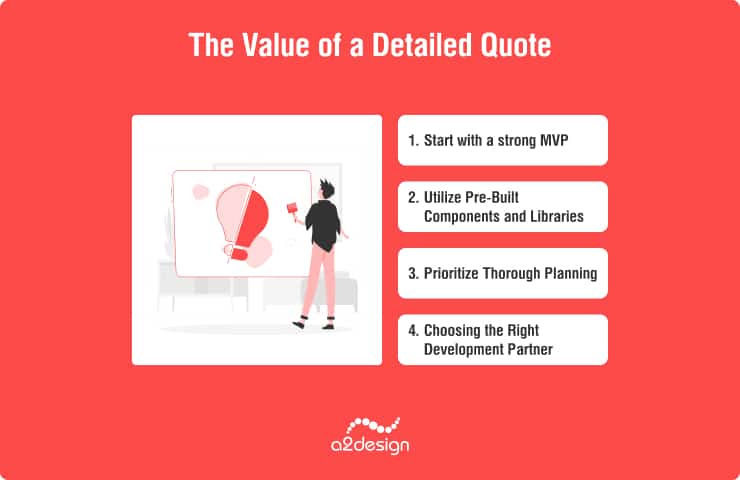
A one-size-fits-all approach simply won’t cut it when it comes to building a successful app. To ensure your app development budget aligns with reality, a tailored and detailed quote is absolutely critical.
At A2 Design, we’re committed to providing tailored and detailed quotes that leave no room for misinterpretation. Our experience with React Native development allows us to break down costs with clarity, outlining the reasoning behind each line item.
What Information Helps Us Help You
We take the time to understand your unique vision to tailor a quote that accurately reflects the true scope of your project.
To generate the most accurate quote, consider providing the following details to potential development partners:
- Project Overview: A brief description of your app’s purpose, target audience, and key problems it aims to solve.
- Features List: Outline essential features, breaking them down into ‘must-haves’ and ‘nice-to-haves.’
- Design Preferences: Describe your design vision: simple and functional or visually striking? Share examples of apps with aesthetics you like.
- Platforms: Will your app target iOS, Android, or both?
- Backend Needs: Will your app need a backend? Describe the expected data storage and functionality requirements.
- Timeline: Do you have a specific launch date in mind, or is there flexibility?
How to Save Money on Your React Native App Development
Developing your mobile app doesn’t have to break the bank. Below are some strategic tips you can use to save money on your React Native project without compromising quality:
1. Start With a Strong MVP
A Minimum Viable Product (MVP) is a basic, barebones version of the app with only the core features essential to its intended purpose.
An MVP approach offers several benefits in controlling costs:
- More Focused Development: Since you are only building the essential features, you can reduce the development time and lower the initial costs.
- Early Feedback: Since it’s faster to develop and launch the MVP, you can quickly gain valuable user feedback to guide future improvement. This can help prevent investment in unnecessary features.
- Attracting Investors: If you need to secure funding, a working MVP demonstrates traction, making it easier to convince investors.
2. Utilize Pre-Built Components and Libraries
There are numerous excellent libraries and components available for React Native, and you can leverage them to save development time and money:
- UI Components: Speed up interface creation with libraries like React Native Elements, NativeBase, or UI Kitten.
- Navigation: Simplify navigation with React Navigation.
- Backend Integration: Utilize Firebase for user management, data storage, and push notifications.
- Specialized Functionality: Explore well-respected libraries for location tracking, image manipulation, payment processing, and more.
3. Prioritize Thorough Planning
A detailed and thorough project plan is critical for success and ensuring cost-efficiency. Consider the following benefits of having a project roadmap:
- Reduces Rework: A clear understanding of requirements minimizes miscommunications and backtracking.
- Efficient Time Management: A structured plan keeps the team on track, promoting efficient use of development hours.
- Risk Mitigation: Potential issues are identified early, preventing costly delays and unexpected problems.
4. Choosing the Right Development Partner
Selecting an experienced development agency like A2 Design offers significant advantages over building an in-house team or hiring freelancers, namely:
- Established Processes: With proven development workflows, working with agencies can help streamline the development process and minimize mistakes.
- Expertise on Demand: Experienced React Native developers offer a depth of knowledge crucial for successful app creation.
- Avoiding Costly Pitfalls: Working with experienced agencies can help you navigate common development challenges, saving you from costly and time-consuming mistakes.
A2 Design team has extensive experience building React Native apps.
TutorTime is one of our on-demand tutor apps we’ve built using React Native. TutorTime is an Australian based tutoring marketplace founded by team of expert educators.
The marketplace allows you to choose an individual tutor for any subject within the school curriculum, as well as extracurricular leisure activities (sports, art).
- Tutors can register through the marketplace, pass an interview and offer their services, classes in the areas in which they specialize.
- Parents and students can also register on the marketplace and choose a suitable tutor, book classes, get a homework assignment, and evaluate the teacher after classes.
The Tutoring Marketplace is available through the web interface and through mobile applications for iOS and Android.
ConclusionAs you can see, there’s no one-size-fits-all answer to the question, “How much is the cost of developing a React Native app?”. We’ll need to consider a variety of factors, including complexity, features, design choices, your development team’s skills and location, and the need for ongoing maintenance.
By understanding these factors, you can make better-informed decisions about your development budget without sacrificing quality. A poorly designed app with limited functionality will ultimately hurt user adoption and long-term success, so it’s critical to find a balance between quality and cost-effectiveness.
Ready to explore how A2 Design can turn your app idea into a reality? Contact us today for a personalized consultation and project quote. Let our expertise in React Native development and commitment to transparency guide you toward a successful app launch.

- A Comprehensive Guide to Pet Care App Development in 2024 [Paws and Pixels]
- Are you looking for the best way to launch your start-up idea in 2024? Start with an MVP!
- How to Build Aggregator Website in 2024 [A Step-By-Step Process]
- How to Develop an On-Demand Dog Walking App in 2024?
- How Much Does it Cost to Create An On-Demand Tutor App in 2024?


